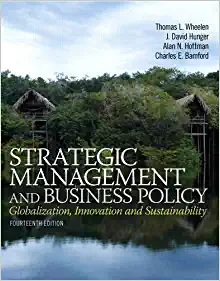Answered step by step
Verified Expert Solution
Question
1 Approved Answer
Elasticity and Pricing Power: Why Different Consumers Pay Different Prices Firms and Nonprofit Institutions Often Recognize and Exploit Differences in Price Elasticity of Demand. All
Elasticity and Pricing Power: Why Different Consumers Pay Different Prices Firms and Nonprofit Institutions Often Recognize and Exploit Differences in Price Elasticity of Demand. All the buyers of a product traded in a highly competitive market pay the same market price for the product, regardless of their individual price elasticities of demand. If the price rises, Jones may have an elastic demand and greatly reduce her purchases. Green may have a unit-elastic demand and reduce his purchases less than Jones. Lopez may have an inelastic demand and hardly curtail his purchases at all. But all three consumers will pay the single higher price regardless of their respective demand elasticities. In later chapters we will find that not all sellers must passively accept a "one-for-all" price. Some firms have "market power" or "pricing power" that allows them to set their product prices in their best interests. For some goods and services, firms may find it advantageous to determine differences in price elasticity of demand and then charge different prices to different buyers. It is extremely difficult to tailor prices for each customer on the basis of price elasticity of demand, but it is relatively easy to observe differences in group elasticities. Consider airline tickets. Business travelers generally have inelastic demand for air travel. Because their time is highly valuable, they do not see slower modes of transportation as realistic substitutes. Also, their employers pay for their tickets as part of their business expenses. In contrast, leisure travelers tend to have elastic demand. They have the option to drive rather than fly or to simply not travel at all. They also pay for their tickets out of their own pockets Next take discounts for children. A child takes up a full seat at the baseball game but pays a lower price than an adult. A child snowboarder occupies the same space on a chairlift as an adult snowboarder but qualifies for a discounted lift ticket. Finally, consider pricing by colleges and universities. Price elasticity of demand for higher education is greater for prospective students from low-income families than similar students from high-income families. This makes sense because tuition is a much larger proportion of household income for a low-income student or family than for his or her high-income counterpart. Desiring a diverse student body, colleges charge different net prices (= tuition minus financial aid) to the two groups on the basis of price elasticity of demand. High-income students pay full tuition, unless they receive merit-based scholarships. Low-income students receive considerable financial aid in addition to merit-based scholarships and, in effect, pay a lower net price. It is common for colleges to announce a large tuition increase and immediately cushion the news by emphasizing that they also are increasing financial aid. In effect, the college is increasing the tuition for students who have inelastic demand by the full amount and raising the net tuition of those with elastic demand by some lesser amount or not at all. Through this strategy, colleges boost revenue to cover rising costs while maintaining affordability for a wide range of students. There are a number of other examples of dual or multiple pricing. All relate directly to price elasticity of demand, to be taken up in Chapter 12. - Create your own individualized response to this prompt. In addition, you might consider these questions. -What are your instinctive "first reflections" on this piece? -What have you learned about Elasticity of Demand from this chapter that helps you to understand how an airline can distinguish the demand for travel between business travel versus leisure travel? -How might a university make optimal pricing decisions relating to tuition between students from high income versus low income families
Step by Step Solution
There are 3 Steps involved in it
Step: 1

Get Instant Access to Expert-Tailored Solutions
See step-by-step solutions with expert insights and AI powered tools for academic success
Step: 2

Step: 3

Ace Your Homework with AI
Get the answers you need in no time with our AI-driven, step-by-step assistance
Get Started


